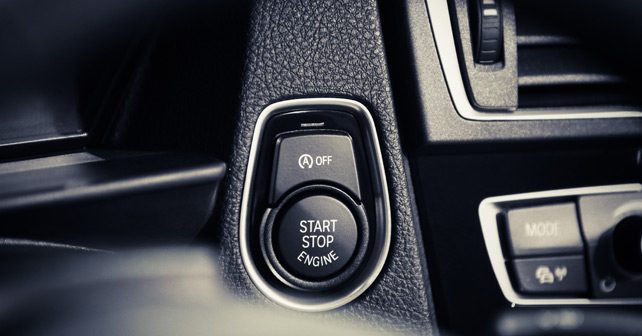
Karl goes to bat for an unlikely technology – that unwitting stop-start system
The first time it happens, your passenger will have a quizzical look hit their face. It’s a strange, wry smile, like they know you’ve done something wrong. The next time it happens, their curiosity will get the better of them. With a bit of a giggle, they ask, “Did you just stall the car?”
Well, no, you haven’t. In fact, it’s completely normal. Once you explain that it’s a fuel saving measure, the penny drops. “It’s called stop-start, and it’s a fuel-saving measure,” you say. And then, they get it. But the next comment, invariably, is: “It feels weird.”
It’s true. Initially it does feel weird. In fact, when I first experienced it, it felt wrong. Like a completely foreign entity had just been inserted into a perfectly normal car. I wanted to reach inside and rip out that piece of software that enabled this engine-killing program to infect my vehicle. Sure, it started up again once I had moved my foot off the brake, but because it wouldn’t happen every time I came to a stop, it was unpredictable.
Worse than that, it made the whole car shudder like it was sitting on a Powerfit Vibration Gym (yes, I watch too much daytime TV). But while I’ve started to get used to the stop-start system in terms of its operation, the refinement is an issue that still manages to grate on my nerves.
What year are we in? How long have we been building cars? And how many years have stop-start systems been in place? You have to wonder, then, why cars still stop with a jerk and kick back into life like a paint-mixer.
Some machines have even become a little too smart. Just when you get used to the right amount of pedal pressure to enable the system, they change the game and kill the engine before you’ve even come to a stop. The problem with that is that your brake booster is relying on a running engine and, all of a sudden, there’s hardly any assistance. Thus, your pedal pressure needs adjusting and you lose all the progression of normal braking. Almost headbutting the dash isn’t the best way of stopping.
And then, if it’s a dual-clutch and you’ve come to a rest behind a car that just decided to take off and you do the same, then you not only have to wait for the engine to start, but also for the clutches to take up and start you off. It seems like an eternity.
Some diesels also stop and start with such vibration you wonder if your fillings will rattle loose. The Volvo XC60, for example, is a shocker. But then the Land Rover Discovery does it brilliantly, so it goes to show a little bit more time spent in R&D always pays off.
Thing is, all this sounds mostly negative, and as though I don’t like it at all. After being subjected to it for years, I now am surprised when a car doesn’t have it fitted. Most of the Toyota range, for example, still doesn’t have it, which is crazy considering how environmentally conscious the company is – after all, they’re the ones who touted the Prius as the saviour of the planet.
At first I thought idle-stop systems were gimmicks, and annoying additions designed to feign a sense of eco-friendliness. But if you add up all the fuel saved and all the carbon that hasn’t been emitted, there’s really no arguing against it. It has never failed and never caused a major issue. On balance, I now support the technology.
Stop-start should be fitted to every new car – as long as it doesn’t shake us to bits.























Write your Comment